Published in 1987, this novel recounts the fictional story of one young New Zealand swimmer as she tries to win a spot on the 1960 Olympic team.
I’m going to save the spoilers for the end, so you can stop reading when you get to them if you don’t want to be spoiled.
When I first picked up the book, I was expecting a quick, easy read. But then it turned out to be one of those publications from the 1980s where the print is tiny and cramped and so the book wasn’t as short as I thought. I went ‘ugh’ and put it aside for later. Once I finally did pick it up again and start reading, it was easier than expected. Overall, I’d say I liked the book. It was an interesting read.
I wouldn’t classify myself as someone who likes sports books and reading about jocks, which is what this book is, so I’d say I liked it despite of that rather than because of it. The main character is likeable, even if I want to just shake her plenty of times. We hear about her rivalry with a swimmer who usually beats her, her family which sacrifices for her, her friends and her school life.
What probably interested me the most was the gender stuff. And the book opens right away with that, with Alex reacting an article written in a women’s section of a paper. How despite training hard, she and her rival also have “feminine” interests and things like that.
It was a little odd to be reading a book that was ~25 years old written about a time nearly 30 years before that. In a way, it felt very much like an 80s book, even though it was written about the late 50s. There were times where I felt it was being a little too obvious about “the 50s were a different time, especially for girls”, and a little preachy about drinking and driving. One character asks rhetorically and hyperbolically whether he should’ve taken his drunk friend’s keys away from him. The 80’s audience is meant to think “Yes, yes, you should’ve!!”
At some point, I started questioning the author’s research. I was stopped by wondering how a girl swims with her period, and had to do some Googling. I had a vague notion that pads were way different and weird in the 50s. Turns out it’s not an easy thing to Google, probably because Wikipedia is written mostly by men. But I did discover that tampons have been around longer than I thought. Not that I’d want to be a 14 year old in the 50s wearing them in a swimming pool. Especially since one of the pools is described as a warm soup of chlorinated salt water. YUCK!
It’s not until nearly the end of the book that it was confirmed for me that tampons were involved.
Yes, dear readers, it’s a book about periods! Well, not really, but it didn’t shy away from it. Even though it was coy about the tampons until the end.
So when Julie Andrews’ voice is mentioned, I had to stop and Google that too. This is before Sound of Music, so how did kids in New Zealand not only know about her, but hear her voice? Well, she was on Broadway in the mid-50s and made a TV appearance just about the time this book takes place. So I gave the author a pass, on the theory that theatre geeks would have records of her Broadway singing. Maybe.
Oh yes, I neglected to mention that Alex is a theatre geek. And a hockey player. And a piano player. And good in school. And into ballet. And I feel like I’m forgetting at least one other activity. She’s doing so many things at once that thinking about it, I just want to lie right down on the floor and take a nap. Most kids would consider being in a theatre production and one other activity plenty. Or, you know, maybe training for the Olympics is enough! She even practices piano for an hour a day. At least we finally learn she’s not so good at school as we were led to believe. At least judging by the grades she got.
A lot of the book is about how she’s doing too many things at once, but she keeps doing them! And nobody forces her to stop. Not her parents, not her coach, not anyone at school.
In the end, I had to trust the author got things right. Or at least more right than I could’ve. Her bio says she was a swimmer in the 50s in New Zealand. So, yea, I don’t have a leg to stand on with my Googling.
Alex’s relationship with her boyfriend is what bothered me the most. She’s 14 and he’s 17. Which, all right. Though her parents and his seem completely fine with this! Her father even arranges a beach trip for her and her boyfriend and gives them alone time to do like, whatever. :} When they do make out, the first time, and subsequent times, her reaction to it is completely unbelievable to me.
Alex is tall and plays the men’s roles in plays in the all-girl school she attends. And there have been comments hinting she might be a lesbian. So she’s a little insecure about her femininity, though mostly she doesn’t let it bother her.
So here’s her first time making out with her older boyfriend.
“I’m also regarded by some as a second best specimen of femininity around the place — except that Andy not only kissed me so many times I lost count on that day of the bridge walk, but also, later in the car, very gently traced the outline of my breast with his fingers, deliciously reassuring me of my femininity…”
The thoughts of a 14 year old? I didn’t buy it.
Throughout the book, she kept seeming to me to be about 16. It was really hard to remember she was 14 and barely 15 by the end of the book.
I’m a big believer that kids are smarter and know and see more things than authors usually give them credit for. But that doesn’t mean they’re emotionally mature.
Okay, I’m going to venture into spoiler territory now. So be warned!
*** Spoilers ***
Remember the drunk driver I mentioned before? Well, Alex and her boyfriend do get out of the car. And then it gets into a wreck, justifying their actions. But the driver and his girlfriend, despite her being thrown completely out of the car, only have minor injuries. If you’re going to try to teach us not to drink and drive, especially without seatbelts, maybe you should give them believable injuries, huh?
But this was just foreshadowing.
About halfway through the book, I had a sneaking suspicion something was going to happen to her boyfriend. And lo and behold I was right. Don’t drink and drive, kids, but that doesn’t matter, because a drunk driver will kill you anyway. The only surprise was that this death meant her ailing grandmother who was “fading away” didn’t have to die.
Sigh. I haven’t read as many Newbery books as K has, but I’ve still read enough books like this to be fed up with the trope. The only thing that would’ve made it more trope-y was if her boyfriend was gay.
And then she’s all.. I have to go to the Olympics for him. And having some weird telepathic conversation with his ghost while she’s racing. Like, not just talking to him in her head, but he’s actually feeding her information she shouldn’t be able to know. Um, all right.
So I liked the book, but liked it much less by the end of it.
I’ll end this review not with a bang, but with a siiiiiiiiigh.

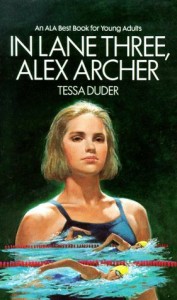


 With the exception of Farmer Boy, the original Little House books all have Laura Ingalls as the main character. Though the books themselves follow her as a child all the way to the first years of her marriage, there’s a time jump* between the third Laura book, On the Banks of Plum Creek and the fourth, By the Shores of Silver Lake. The existence of this gap means it makes sense to me to break the series there and have a look at the first three books together.
With the exception of Farmer Boy, the original Little House books all have Laura Ingalls as the main character. Though the books themselves follow her as a child all the way to the first years of her marriage, there’s a time jump* between the third Laura book, On the Banks of Plum Creek and the fourth, By the Shores of Silver Lake. The existence of this gap means it makes sense to me to break the series there and have a look at the first three books together.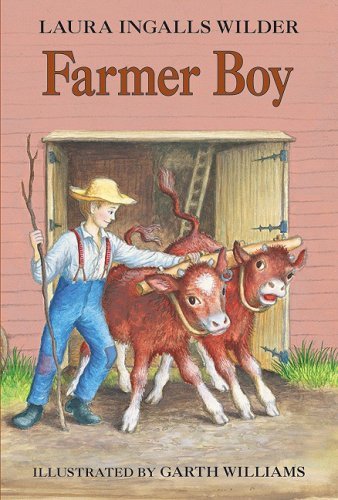
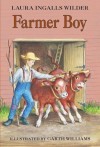 The Plot
The Plot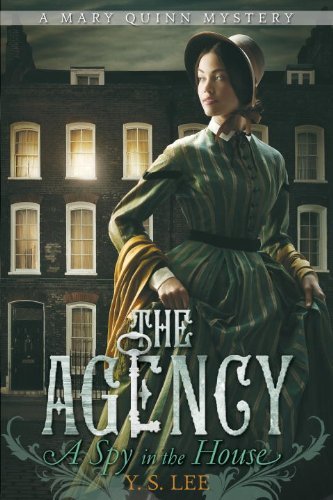

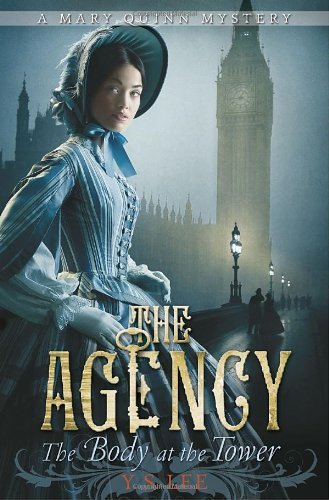
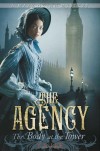 The Plot
The Plot